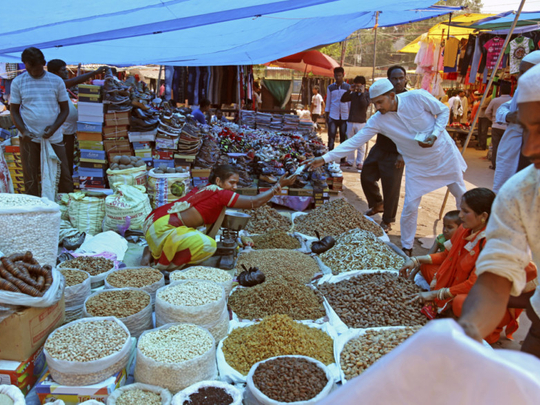
The western state of Maharashtra, home of Mumbai and the biggest regional economy of India, recently announced that it will waive farmer loans worth Rs1.14 trillion (nearly Dh66.2 billion).
The June 12 measure will leave only Rs800 billion in the state’s coffers until the end of the fiscal year, the Indian Express reported. The state government said it would cover its expenses by borrowing.
On its own, this news may not be so alarming. However, taken together with recent state borrowing trends in India, it is cause for concern — and some have even warned of a looming debt “bubble”.
Borrowing by state governments has risen consistently since 2007. Between 2015 and 2017, 18 out of India’s 31 states and territories exceeded the permitted gross fiscal deficit (limited by a 2003 national law to 3 per cent of gross state domestic product).
And there is more to make an economist’s hair stand on end. About 70 per cent of India’s banking sector is in the hands of Public Sector Undertaking, or PSU, banks — relics of the country’s flirtation with socialism until 1991.
Between 2012 and 2015, 27 PSU banks wrote off the same amount of Rs1.14 trillion worth of bad debts, more than the total of write-offs in the previous nine years. Economic measures such as last year’s demonetisation, the prohibition of liquor in certain states (though liquor makes up a quarter of some states’ income) and the banning of beef (which, as a recent paper suggests, could deduct 2 per cent from the annual gross domestic product growth) have not helped.
A projected increase of foreign direct investment in India by $3.5 billion (Dh12.87 billion) has allayed fears, but this is not likely to cushion the investment shortfall, warns Dr V. Anantha-Nageswaran of the foreign policy think tank Gateway House.
Many also look at the shrinking central debt under the government of Prime Minister Narendra Modi and see cause for optimism. However, interest payments already consume one-third of the Indian central government’s tax revenue.
And though Modi seems keen on meeting fiscal targets, he campaigned and won the assembly election in the northern state of Uttar Pradesh on the promise of more loan waivers for farmers, which he duly kept.
Waiving farmers’ loans
This leads to the obvious question: While debt in itself is not a bad thing, one must ask what the debt is financing. Investment to improve productivity is critical, but waiving farmers’ loans will simply lead to a repetition of the same situation years from now, unless agricultural reforms follow.
Populist promises like loan waivers lead to short-term relief but long-term strain on India’s economy.
And though the Reserve Bank of India, the country’s central bank, was once a force to reckon with, it now produces no more than irritated noises. Thus, state and national politicians can carry on with their unabashed profligacy, which inevitably lead to inflation.
If the Modi government intends to actually improve India’s economy, it must not stop with the Goods and Services Tax (a nationwide tax that will absorb central, state and lower-level indirect taxes), or with meeting national fiscal targets alone. Improving India’s credit rating (stuck just a notch above “junk” status) and improving India’s Ease of Doing Business Index score (beyond hemming and hawing over World Bank reports) would actually get the country’s gears moving. Debt bubble or not, the real economy is something that can never be written off.
— Worldcrunch, 2017/New York Times News Service









